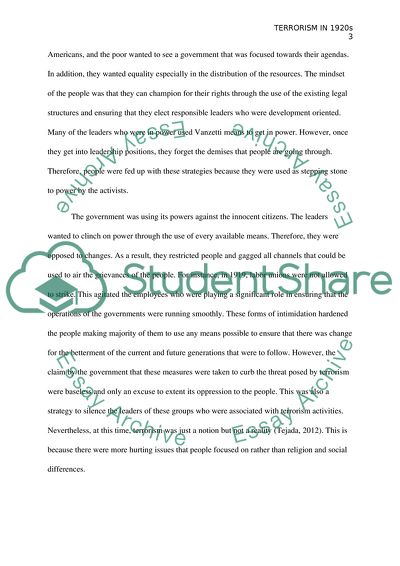Cite this document
(Do you Believe Terrorism Was a Real Threat in the Early 1920s Assignment Example | Topics and Well Written Essays - 1250 words, n.d.)
Do you Believe Terrorism Was a Real Threat in the Early 1920s Assignment Example | Topics and Well Written Essays - 1250 words. https://studentshare.org/social-science/1857637-do-you-believe-terrorism-was-a-real-threat-in-the-early-1920s
Do you Believe Terrorism Was a Real Threat in the Early 1920s Assignment Example | Topics and Well Written Essays - 1250 words. https://studentshare.org/social-science/1857637-do-you-believe-terrorism-was-a-real-threat-in-the-early-1920s
(Do You Believe Terrorism Was a Real Threat in the Early 1920s Assignment Example | Topics and Well Written Essays - 1250 Words)
Do You Believe Terrorism Was a Real Threat in the Early 1920s Assignment Example | Topics and Well Written Essays - 1250 Words. https://studentshare.org/social-science/1857637-do-you-believe-terrorism-was-a-real-threat-in-the-early-1920s.
Do You Believe Terrorism Was a Real Threat in the Early 1920s Assignment Example | Topics and Well Written Essays - 1250 Words. https://studentshare.org/social-science/1857637-do-you-believe-terrorism-was-a-real-threat-in-the-early-1920s.
“Do You Believe Terrorism Was a Real Threat in the Early 1920s Assignment Example | Topics and Well Written Essays - 1250 Words”. https://studentshare.org/social-science/1857637-do-you-believe-terrorism-was-a-real-threat-in-the-early-1920s.


